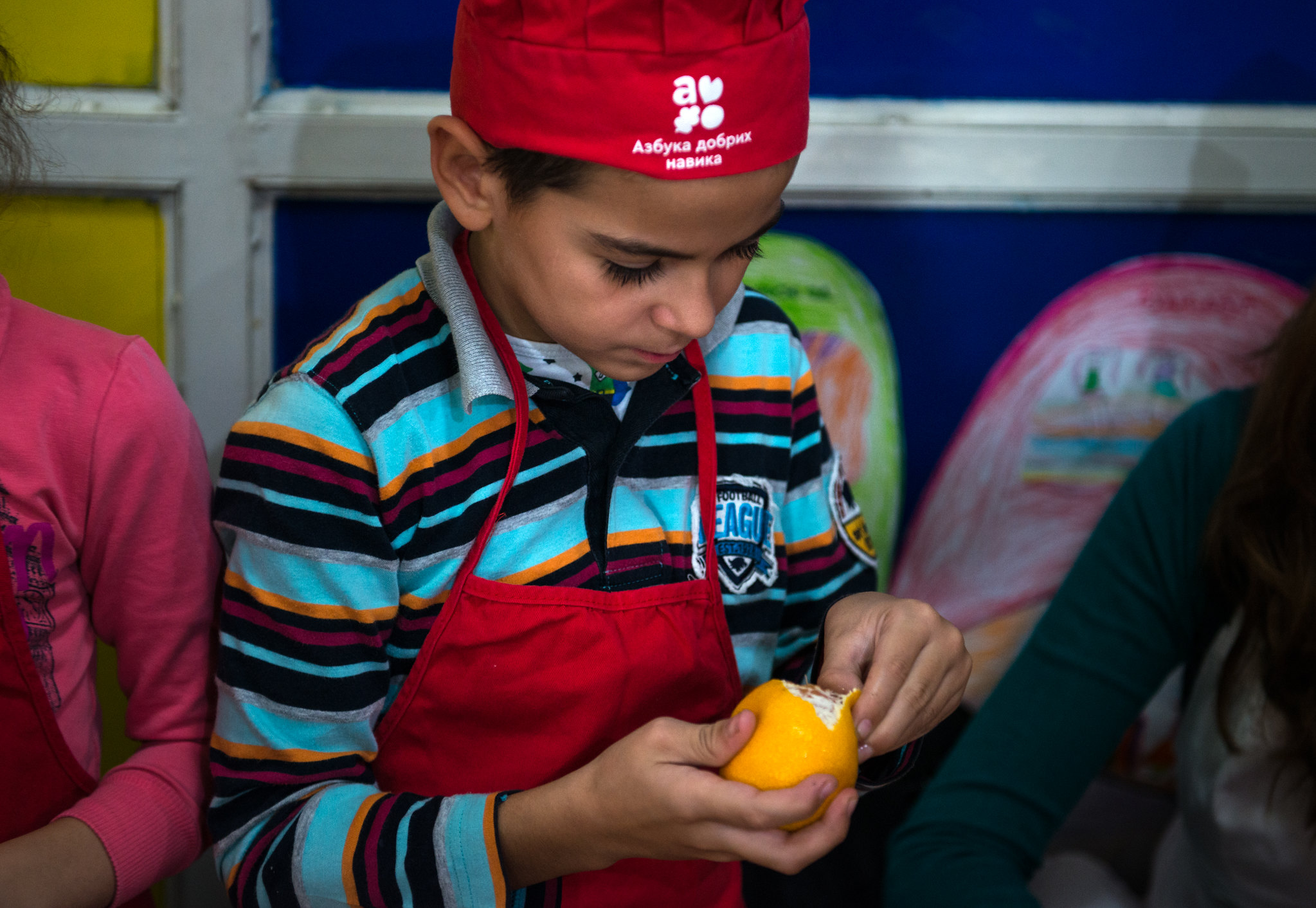It’s not only important for parents to read the product labels, but also to educate them to understand all the relevant data that can affect the health of their entire family.
A careful reading of product labels should be an integral part of the consumer culture of each of us because that is the only way we can know what we are buying. The product label indirectly protects the health of consumers, because it is an indicator of what is taken into the body through a certain food product. It allows you to find out how fresh the food product is, what energy value it has, what added ingredients it contains, and helps you decide on those foods with a lower content of calories, sugar, salt, additives or preservatives. Recently, the product labels also contain guidelines for the recommended daily intake that can help us choose food.
The label must be clearly stated, precise and legible, and all those products that do not have it must never be sold or available to consumers. It must be on the back of the product and must contain all the information necessary for safe and quality shopping, especially those products that are intended for children.
Food or any other product that does not have a label should never be bought.

Declaration provides information on the origin, purpose, composition and storage of the food product.
Why is it important for parents to read product labels carefully?
The product label is the identity card of the product
It provides information on the origin, purpose, composition and storage of the food product. The product label contains a list of ingredients and nutritional value, ie the content of proteins, fats and carbohydrates, in a certain amount of product, and often depending on the product and data on energy value, sugar, saturated fatty acids, cholesterol, trans fats, fiber, sodium, vitamins and minerals. A significant number of people, especially children, are allergic to certain food ingredients or some ingredients in other products. That is why it is important that the information on the declarations is clear and precise, and that it indicates whether the product contains allergens and which ones.
They help in choosing healthier food
When it comes to meat products, you should look at the list of additives that should be avoided, because they are proven to be dangerous to health: E250 (preservative sodium nitrite), E621 (monosodium glutamate-flavor enhancer), E450 (emulsifying salt that disturbs the water balance in the organism). With sweets, salty snacks and drinks, which should be reduced to a minimum in the diet, it is very important to look at the values “‹”‹of fat, sugar and salt content, which are present in these products. They are a source of empty calories, lead to obesity and are a risk factor for health. It is also important to see if the product contains artificial additives, paints and emulsifiers: E, E102, E104, E110, E122, E124, E129. These are labels for artificial colors that cause hyperactivity in children.
If the product contains any of them, the declaration must bear a bold statement: “May adversely affect the activity and attention of children.”
Bad producers reduce the price by adding cheaper raw materials
In the confectionery industry, these are sugar and vegetable fats. In the case of chocolates and biscuits, the content of vegetable fats should be considered, because they contain bad trans fatty acids which are obtained by partial or complete hydrogenation of vegetable oils. If the declaration contains hydrogenated or partially hydrogenated vegetable fat next to the vegetable fat, it means that the product contains vegetable fat with bad trans fatty acids. Ready meals, pastries, sweets, fried foods, salty snacks, margarine as well as fast food contain trans fats, harmful to blood vessels and the heart. They lead to a drop in HDL-protective cholesterol and raise the level of LDL-bad cholesterol, which accumulates on the walls of blood vessels and damages the heart. On the declarations of products that contain good fats – without trans fatty acids, the list of ingredients should include that information.
The sooner you involve children in food preparation and grocery shopping, the more ready they will be to try a variety of foods. Read here the nutritionist’s recommendations on how you can turn food preparation into an educational activity for children!

It’s not only important for parents to read the product labels, but also to educate them to understand all the relevant data that can affect the health of their entire family.
Fruit labels contain numbers that say a lot
If the four-digit number starts with 3 or 4, it is very likely that pesticides were used during cultivation. Thus, bananas or apples grown with pesticides are marked with the code 4011. You will easily recognize the genetically modified fruit by the five-digit mark on the declaration, which starts with the number 8.
Genetically produced bananas or apples are marked with the number 84011.
The initial number 9 in the five-digit label on the declaration suggests that the fruits are obtained by organic cultivation, in the traditional way, without pesticides and artificial fertilizers, or by the use of manure. Organic bananas will have a sticker with the number 94011 printed on them.
It is important that parents read the product labels when buying children’s toys
Toys made of plastic polymers, especially PVC, should be avoided, as they may contain softeners – phthalates, which are identified by recycling mark 3; hard polycarbonate plastic toys that may contain bisphenol (BPA), which is recognized by the recycling mark 7. When buying toys, you should ask for a certificate stating the country of origin, as well as the mark “tested”.
The CE mark on the label or packaging of a toy is not a guarantee that the toy meets all the prescribed safety requirements.
Safe toys, as well as clothes, have a neat label with all the necessary information: country of origin, manufacturer, brand and label “tested”.

















